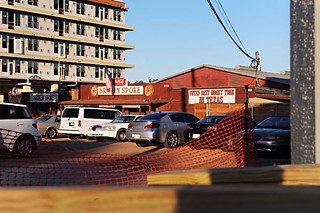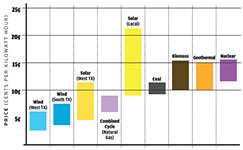Then There's This: Decoding the Code
Trying to detangle 30 years' worth of regulatory layers
By Amy Smith, Fri., May 9, 2014
First there was CodeNEXT – the fancy name given to the Imagine Austin process, which city planners kicked off with a 2013 listening tour across the city to gather residents' feedback on how to shape or reshape the way the city grows.
Now there's Code Diagnosis, a nearly 100-page report released this week that identifies the underlying causes of Austin's ever-groaning growing pains. These ailments, it turns out, are tied to an "overly complicated" and "ineffective" Land Development Code, one of the city's most vital organs. We've been hearing this over-simplified explanation for some time now, but the new report offers more specifics.
The LDC has something like 30 years' worth of regulatory layers that have been added on since its last major rewrite in 1984, "making it so convoluted it is virtually unusable." That's the grim assessment of the CodeNEXT team, led by consultant Dan Parolek of Berkeley, Calif.-based Opticos Design Inc. Residents will have an opportunity to learn more and take a stab at cracking the code at a community event on Monday, May 19 (6-8pm, Penn Field, 3601 S. Congress, Bldg. C.)
Parolek and representatives of the city's Planning and Development Review Department provided a diagnostic overview of the LDC situation at Monday's meeting of City Council's Comprehensive Planning and Transportation Committee. The city has also released the more detailed report, available at www.austintexas.gov/codenext.
Additionally, the CodeNEXT team has begun making the rounds to speak to city boards and commissions, with the next presentation set for Monday, May 12, before the Waterfront Planning Advisory Board. It'll be another two years at least before this major overhaul of the LDC goes to City Council – by then a new and bigger Council – for consideration and adoption.
Doubting Thomases
To be sure, leaders of the Austin Neighborhoods Council and some individual neighborhood reps came into this process with low expectations before City Council members even adopted the Imagine Austin comprehensive plan. Two years later, they are still fairly skeptical of this newfangled process, which is a whole lot different from the Austin Tomorrow Plan of yesterday. And judging by a coordinated presentation during last week's Citizens Communication segment at Council, there are still considerable fears about whether Imagine Austin will, in fact, trump existing neighborhood plans, as many activists have long suspected. In their minds, the old slogan – "Question Authority" – has never been more relevant than it is in today's Austin.
Anyway, the Code Diagnosis report is chock full of hard truths. There's very little sugar-coating, which may be off-putting to folks who've had a hand in the LDC over the years. "The most visible and critical issue," it begins, "is that the code structure and organization is overly complicated, not well coordinated, and does not meet modern-day best practices in code writing layout." The code's complexity and time it takes to jump through all the hoops at the city "has hindered small-scale, incremental adaptive-reuse projects, and the incubation of local small businesses," we're told.
The complex layers are understandable when considering the major code amendments that have been made since 1984: There was the Hill Country Roadway Ordinance, designed to protect scenic views, back when scenic views were more plentiful; then came the Comprehensive Watershed Ordinance, followed by the landmark Save Our Springs Ordinance, and then the real meaty stuff designed to stimulate density inside the core – with acronyms like CURE, SMART, and TOD. We added some restraints in 2006 with the McMansion Ordinance, then loosened the grip the following year in the Barton Springs Zone with new redevelopment rules; protections for heritage trees were added in 2010. But 2013 saw the most dramatic and contentious changes with new rules affecting, among other things, Downtown parking, short-term rentals, the repeal of the grandfathering rules (revisions to which are currently under Council consideration), changes to the Downtown density bonus program, and revisions to urban farm regulations. What a year.
Top 10 Problems
Here are the key code conundrums identified in the report:
1) Ineffective base zoning districts because the same development regs are applied in "vastly different types of places";
2) Competing layers of regulations have rendered the LDC "virtually unusable";
3) Complicated "opt-in, opt-out" system results in unpredictable development and lack of understanding of what's okay and what's not;
4) Lack of household affordability choices;
5) Automobiles (still) rule the day;
6) LDC is out of alignment with Imagine Austin, hindering implementation of plan;
7) Lack of clarity in the structure, layout, and terminology of the code;
8) Ineffective digital code: Interface is clunky, operates slowly, and lacks graphics;
9) Code changes hobble department organization (not to mention employee morale);
10) Incomplete administration and procedures, causing lengthy review processes.
Got something to say on the subject? Send a letter to the editor.











